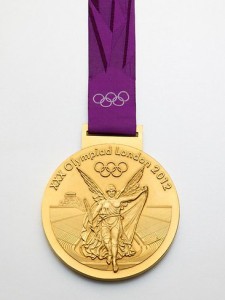There will be a total of 302 gold medals awarded at The Games of the XXX Olympiad. There are more than 10,500 athletes competing from 200 nations and territories. Every four years we create an engaged global audience that together watches, cheers and celebrates the world’s best compete for gold. Humans love competition.
The definition of compete is to strive consciously or unconsciously for an objective as in position, profit, or a prize (Merriam-Webster). When we join forces to compete, we become one. Competitors seeking a prize. Competing to win. That makes us all winners.
We look beyond borders and differences and we unify to revel in athleticism. We encourage those competing to push harder, overcome challenges and fight to cross the finish line first. We celebrate individuals, teams, countries and the world.
Some say showing up is success. It takes more than showing up. It takes competition to engage us. Why? Competition motivates, inspires and rewards. It drives us. It excites us. It makes our heart beat accelerate. It is an experience. Flags wave faster, people stand taller, crowds cheer louder and we watch more intensely when the competition heats up. Good competitions get everyone involved in celebrating success. Showing up is just doing a job. Competing is striving to win! We want to be with the winners.
Have you created a competitive culture in your business? Does everyone on your team compete to win? Whether we are awarded gold medals, business awards, new contracts, customers or simply a thank you, the best motivator to drive us is competition. To win in business, you need to compete. When you compete internally and externally, you will be rewarded. You will win.
There are many ways to compete in business. You can easily set up internal competitions to meet deadlines, achieve sales numbers, launch products faster, reach new levels of customer satisfaction, increase profits, grow your customer base, or decrease errors. There are great financial gains awaiting through external competitions. Winning new business contracts, opening new markets, reaching higher industry standards, increasing shareholder value, gaining on the competition for market share, all will reward your business and will help drive your team to strive for more.
The worst statement made to an investor is “We have no competition.” Beyond the absurdity and audacity, is the fear that if you have no competition, you won’t be motivated to win. Investors love to put money in businesses that are competing in a race to the finish line. In the eyes of an investor, the finish line may be an exit with a 5 or 6 multiple return on investment. What is your finish line? You always have competition, inside and outside of your business. You always compete. We invest in those competing to win.
If 200 nations understand the value of competing to win the gold, what is stopping you from doing this in your business? Competing is winning. Cultures that compete, win. Create a culture that embraces winning. Teams win when they know the goals and they have leaders that encourage them to complete. They will compete when they are rewarded for winning.
The Olympic spirit is not a myth. It is a reality. It inspires us. It is a feeling that touches us deep in our gut and makes us feel emotional about trying hard to achieve something far beyond the reach of most of us. This same spirit has the power to unite millions from around the world to participate by simply watching others go for gold. When they win, we win. Every gold, silver and bronze medal for Team USA, feels like all Americans win! Every country feels the same about their exceptional team of athletes. That would make us all winners. Worldwide winners!
Most people want to be a part of a culture that celebrates winning and achievement. When is the last time your brought your team together to motivate them to compete. Provided an opportunity to win. When did you last recognize others and reward individuals, teams and the entire business for winning?
Now is the perfect time for you to inject more competition into your business, into your culture. You can blame it on the Olympic spirit!

By Jamie Glass, CMO and President of Artful Thinkers and Managing Director, Sales & Marketing Practice at CKS Advisors.




You must be logged in to post a comment.